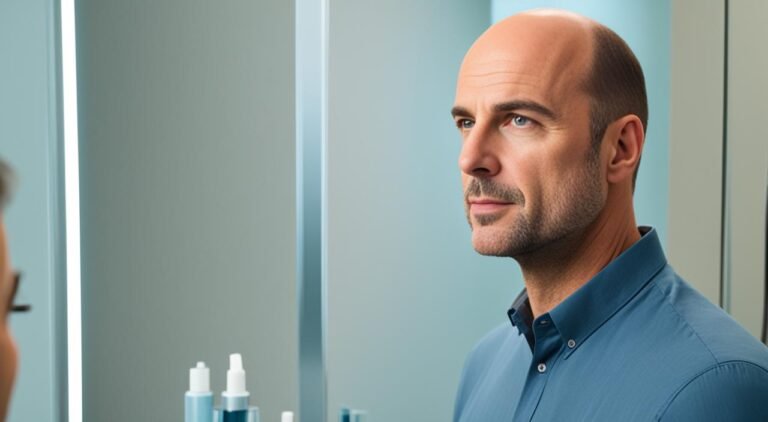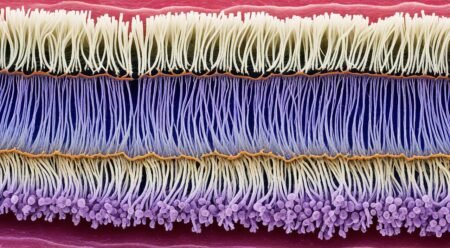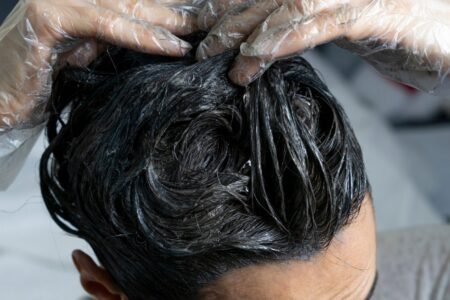Imagine seeing a reflection that matches how young and lively you feel inside. For many, hair loss takes away from this image. But, there is still hope. Considering advanced hair restoration means looking to regain not just hair, but your identity. Getting to know the advanced hair restoration cost is the first step to changing your life. It’s a way to rebuild confidence. As you explore hair transplant pricing, you’re starting an important journey. This journey is about more than looks—it’s about feeling good again. Let’s find out how you can make smart choices about this, planning for your future.
Understanding the Investment in Your Hair’s Future
Key Takeaways
- Gaining insights into the multiple factors that determine advanced hair restoration cost.
- Deciphering hair transplant pricing to prepare for a smart, informed investment in your well-being.
- Recognizing hair restoration as more than a procedure, but a step towards renewed self-confidence.
- Unpacking the long-term value behind each dollar spent on advanced hair restoration.
- Learning how the specifics of your situation shape the overall cost of regaining fuller hair.
Understanding the Investment in Your Hair’s Future
Thinking about hair restoration? Know it’s more than a service. It’s an investment in yourself. Hair loss affects more than just looks. It can hit our emotions and mind, too. Ever heard “look good, feel good”? Hair restoration brings that value, changing life for the better.
Enhanced Confidence: How you see yourself matters a lot.
A new hairline can truly change how you feel about yourself.
Psychological Well-Being: Losing hair can be tough, beyond vanity.
It’s about feeling complete and at ease in your skin.
Social Perceptions: Looks can impact how we’re seen in work and social life. A full head of hair might help you stand out.
Long-term Satisfaction: Hair restoration isn’t just a quick fix.
It’s a lasting solution, saving you from ongoing struggles with hair loss.
- Investing in hair restoration boosts how you look and feel, leading to a happier life.
- Compared to its long-lasting benefits, the initial cost of a good hair transplant seems small.
Enhancing your future starts with one informed choice.
Why not choose something that continues to reward you? Imagine seeing a confident, vibrant you in the mirror daily. Hair restoration isn’t just a cost; it’s a step towards that reality.
“The beauty of advanced hair restoration lies not just in the restored follicles but in the newfound zest for life that often accompanies it.”
On this journey, remember hair restoration’s value goes beyond just looking good.
It is a lasting investment in your personal and professional happiness. Your future self will be grateful for choosing a path of confidence, well-being, and empowerment.
Breaking Down Hair Transplant Pricing
Planning to get a hair transplant requires understanding the costs. Hair surgery expenses play a big part in your decision. We’ll look into what makes up these costs. This will help you make an informed choice.
Variation by Technique
There are different techniques for hair transplants. Each has its own cost. The Follicular Unit Extraction (FUE) and Follicular Unit Transplantation (FUT) are popular. FUE is less invasive but takes more time, while FUT involves removing a scalp strip. This choice affects hair surgery expenses greatly.
The Geographic Factor in Hair Surgery Costs
The location of your clinic influences costs. Prices can change a lot based on the clinic’s city or country. High-cost areas usually have more expensive services. Think about this when choosing where to get treated. Also, consider the travel costs if you go abroad.
The Reputation and Expertise of the Surgeon
Your surgeon’s skills and fame matter. Hair restoration pricing factors include the surgeon’s experience. Top surgeons charge more but offer better trust and quality. This can avoid extra costs for corrections later. It’s true—you often get what you pay for in hair restoration.
Comparing Hair Restoration Methods and Expenses
Starting your hair restoration journey involves knowing the methods available and their costs. Each method has benefits and drawbacks. Choosing the right one depends on your preferences, budget, and hair loss type. We will explore the details of various hair restoration techniques to help you decide.
Surgical Hair Transplantation offers the most lasting solution for hair loss. Techniques like Follicular Unit Transplantation (FUT) and Follicular Unit Extraction (FUE) create natural results. However, they are the priciest options upfront. Surgical methods need experts and often have longer recovery times.
- Pros: Long-lasting results, natural hair growth pattern
- Cons: Higher costs, invasive, longer recovery time
Non-Surgical Options, including topical treatments (minoxidil) and pills (finasteride), are less invasive choices. They work best in hair loss’s initial stages.
- Pros: Non-invasive, lower start-up cost, may slow hair loss
- Cons: Ongoing use needed, might be less effective for severe hair loss
Hair Systems, or wigs, offer an instant new look without surgery. Quality and price of hairpieces vary greatly. Yet, top-tier systems look very natural.
- Pros: Non-invasive, instant change, many style options
- Cons: Regular care needed, may feel insecure, need to replace periodically
Think about the long-term effects and costs of each method. Surgical transplants, though costly at first, might be cheaper in the long run. This is compared to non-surgical treatments that need continuous payment.
Quality of life improvements and increased confidence are the real benefits of the right hair restoration choice. Take your time, evaluate your situation, and talk to experts to make a wise investment in yourself.
Understanding these options well is key to finding a solution that fits both your look and budget. Use professional advice to guide you to a fresh sense of confidence.
Advanced Hair Restoration Cost: Comprehensive Guide
Beginning a hair restoration journey is a big step. It involves both emotional and financial planning. This guide will help you understand the cost of advanced hair restoration. We’re covering everything from the first consultation to the procedure costs, and extra treatments.
Initial Consultation Fees
Start with an initial discussion about your hair loss and options. This may cost you, as fees differ widely across clinics. In this meeting, your doctor will check your hair loss and talk about a plan. This will help you understand the hair transplant cost comparison.
Cost Analysis of FUE vs. FUT Procedures
There are two main hair restoration techniques: FUE and FUT. They have different methods and recovery times, influencing the cost of advanced hair restoration. FUE is more intensive and usually costs more than FUT. But, the price also depends on how many grafts you need and the procedure’s complexity.
- FUE extracts hair follicles individually and might need more than one session.
- FUT involves removing a scalp strip to get many follicles at once.
Consider the long-term benefits and your needs to decide which procedure fits you.
Additional Treatments and Their Impact on Overall Pricing
Add-on treatments like PRP or laser therapy can boost results. They are typically recommended with hair transplants and affect the total hair transplant cost comparison. While increasing the initial investment, these treatments can lead to better growth and happiness later.
Remember, spending on advanced hair restoration can be high. Yet, the chance to enhance your looks and confidence? That’s invaluable.
Navigating Affordable Hair Loss Treatment Options
Finding an affordable hair loss treatment can feel like a maze. But with the right info and tools, you can find a way that fits your budget without losing quality. Planning and understanding the costs are key to making hair restoration affordable.
Researching Financing and Payment Plans
Many clinics know paying for treatments can be hard. They offer financing or payment plans to help. By researching, you find options that spread the cost, making it easier. Some even have no interest for a while, cutting long-term costs. Just be sure to read everything carefully before agreeing.
Insurance and Hair Restoration: What’s Covered?
Insurance coverage for hair loss treatments is complex. It varies a lot by provider. Sometimes, treatments linked to medical conditions are partly covered. Talking to your insurance company is crucial to know what’s included. Having documents from your doctor can help in these talks.
Starting your hair restoration journey should be hopeful, not stressful. Knowing about affordable hair loss treatment options makes you ready to choose well for both your wallet and yourself. Remember, investing in your confidence is priceless. A solution that fits you can bring joy that’s worth more than money.
The True Value: Quality vs. Cost in Hair Transplants
Looking into hair transplants makes cost a big focus. It’s a big decision since advanced hair restoration isn’t cheap. Yet, it’s vital to compare the cost with the quality of the procedure. Going for a cheaper option might seem good, but high-quality procedures offer satisfaction and amazing results.
Quality is key in choosing. A top-notch hair transplant looks natural and has a high success rate. This means you get more for your money. Think about the surgeon’s skills, the method used, and the care after the surgery.
“Investing in quality is investing in yourself. Your hair restoration journey is not just a cosmetic change; it’s a path to rejuvenated self-confidence and well-being.”
Look at before-and-after pictures, reviews, and the clinic’s status. These show what you might get from your procedure.
- The success rate of the transplant and how happy patients are.
- The use of the latest technology and methods in the field.
- The experience and credentials of the medical team.
- Great post-operative support and treatment choices.
The lowest priced option is not always the top choice for health and beauty. Investing in quality means you’re getting something lasting and results to be proud of. Your hair is part of who you are—pick a service that respects this and offers excellent results.
What Influences Hair Restoration Pricing Factors?
When thinking about hair restoration, it’s important to look at hair restoration pricing factors. This lets you know what kind of money you’ll need. It goes beyond picking a clinic or method. You need to understand what makes up the cost.
Extent of Hair Loss and Graft Numbers
How much hair you’ve lost greatly affects the hair restoration pricing factors. If you’ve lost a lot of hair, you’ll need more grafts for a full look. This will raise the cost. Each graft holds 1-4 hairs and is placed carefully for a natural look.
- Determining graft numbers through a consultation.
- Calculating the cost based on the area needing coverage.
- Planning for future loss and preventive steps.
The Hidden Costs: Post-Operative Care and Maintenance
Post-op care’s hidden costs also matter in hair restoration pricing factors. High-quality aftercare means better, longer-lasting results. Yet, it increases the upfront price.
- Maintenance via supplements or meds.
- Special shampoos or serums that promote growth.
- Follow-ups and possible touch-ups later.
Talking to respected clinics and planning carefully makes these costs clearer. This helps you budget better for your hair restoration.
Maximizing Your Hair Transplant Investment
Choosing to have a hair transplant is a big step. It’s all about getting back your confidence and looks. Following a strict care plan after the procedure is critical. Make sure you rest well, take your meds, and keep clean to heal best. The goal isn’t just getting hair to grow. It’s about making sure it stays and looks natural for a long time.
Eating right plays a big part in keeping your new hair healthy. Go for foods full of protein, vitamins, and minerals. Use gentle, sulfate-free products for your hair and scalp. Lowering stress is also important. You can try working out, meditating, or getting enough sleep. Taking good care of yourself helps a lot.
Don’t skip the follow-up appointments with your hair doctor. These check-ups let them see how you’re doing. You might talk about extra treatments too. Things like PRP therapy or laser therapy could make your hair even better. Taking good care post-surgery really makes a difference.










